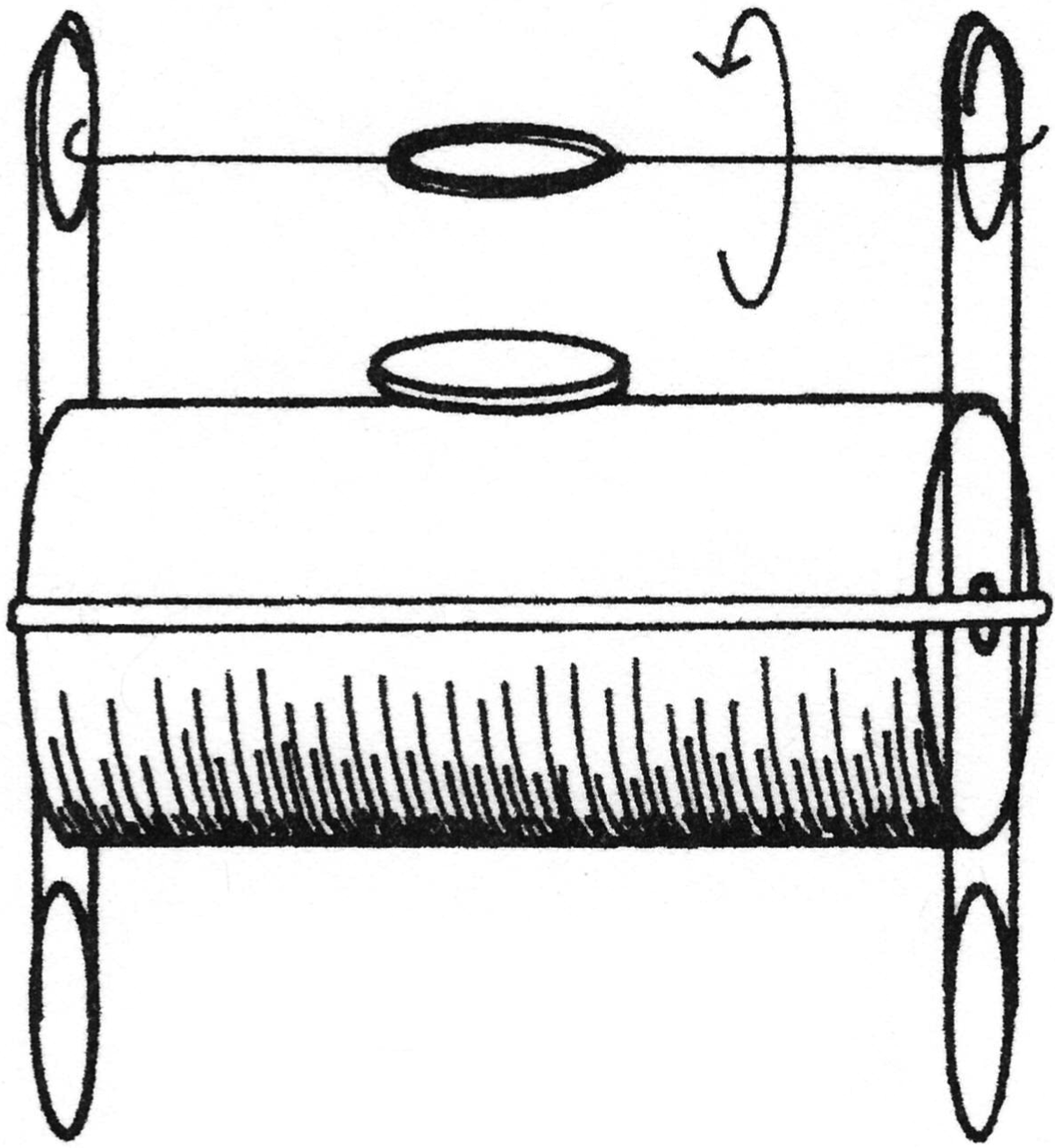December 01, 1990 Filed in:
Demo CornerRobert Ehrlich, Physics Department, George Mason University
Ed. note: This article has been excerpted, with permission, from a delightful 225-pg. book on physics demonstrations,
Turning the World Inside Out, by Robert Ehrlich. This book (ISBN 0-691-02395-6) is a treasure-trove of good, inexpensive demonstrations. You can order it through your favourite bookstore or, while supplies last, at a 20% discount directly from the author. (Send a cheque for $13 (U.S.) payable to “GMU Foundation: Physics Teaching Fund”.)
Demonstration
The world's simplest motor can be constructed in less than five minutes.
Equipment
A “D”-size 1.5 V battery; a small disk-shaped magnet; some wire; and a thick rubber band.
Construction
You need to make a small field coil (the rotating part of the motor) and two supports in which to place the ends of the field coil. Make the field coil of the magnet by winding 10 turns of varnish-coated noninsulated number-22 wire. Make the ends of the wires that extend from the field coil into hook shapes, as shown in the illustration. Scrape the varnish off the top half of the two wire ends. Shape two paper clips (or some stiff noninsulated wire) into two rigid supports that have small loops at the top. With a strong rubber band, hold the two supports fixed against the two ends of the battery. Insert the hook-shaped wires coming out of the field coil into the loops at the tops of the two rigid supports, so that the field coil lies just above the disk-shaped magnet, which is placed atop the battery at its middle. Current flows through the field coil as long as its ends are in electrical contact with the supports.
 Comment
Comment
If you give the field coil a little push, it should keep spinning for a while. The motor doesn’t require split rings or a commutator because the field-coil wires make electrical contact with the loops during only half of the cycle, and the coil’s rotational inertia carries it through the other half of the cycle. The motor can be held sideways on an overhead projector and shown to a large group. Take the field coil off when you’re done so you don’t run the battery down completely, since the field-coil resistance is very small. For more details on this ingenious demonstration, see the following two articles in
The Physics Teacher (TPT): Rudy Keil,
TPT 17, 308 (1985), and Scott Welby,
TPT 23, 172 (1985).
There are other devices that can also lay claim to being the world’s simplest motor. Among them is “Top Secret”, made by Andres Manufacturing Company, Inc. of Eugene, Oregon, and sold in novelty stores. This intriguing device consists of a small top that can be given a spin on a platform that comes with the top. An initial spin causes the top to spin for days. The device is actually a motor. It has a battery-powered transistor and coil in its base that provide an alternating magnetic field, and there is a permanent magnet inside the top. The spinning magnet top induces a small current in the coil which the transistor amplifies. The magnetic field produced by the amplified current attracts (and accelerates) the spinning magnet top, thereby offsetting frictional losses.
Column Editor: Ernie McFarland, Physics Department, University of Guelph, Guelph, Ontario, N1G 2W1 Tags: Electricity, Magnetism


